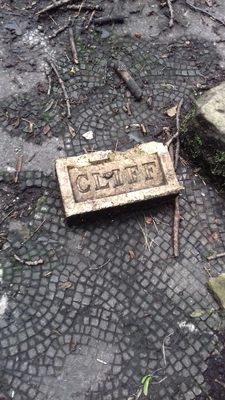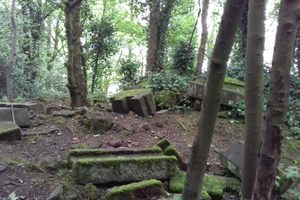About
Nestled in a wood, reached by a small country lane popular with walkers and cyclists, the ruins of Milner Field have lain hidden from view since the 1950s, when the mansion's grisly reputation led to a failed demolition using dynamite. When even TNT couldn't shift the seemingly cursed house, it was torn down instead.
Built between 1871 and 1873, the mansion was the brainchild of Titus Salt Jr, the son of the wealthy Victorian industrialist and philanthropist Sir Titus Salt. Towards the end of his life, Titus senior gave his son a plot of farmland to build a house. This would become Milner Field, a lavish, sprawling testament to his wealth and power, which even attracted royal visitors on a few occasions.
However, things started to go awry in November of 1887, when Titus junior died suddenly of heart failure in the billiard room of the mansion. The business he'd inherited from his father then began to slump, and the house was sold off to Sir James Roberts, whose personal life was beset by death, calamity, and national scandal after he moved into the residence in 1904. By 1923, the house fell to Ernest Gates, whose wife passed away just two weeks after the move, before he himself died after injuring his foot in an accident and developing septicemia. The final owner of the house, Arthur Remington Hollins, saw his wife die of pneumonia less than a year after moving in, and soon passed away himself by hiccuping to death after irritation of the gall bladder and diaphragm.
In 1930, the mansion was put up for sale again, but understandably, it failed to sell. The house lay derelict and started to be stripped of its valuables, its windows, and then finally the roof. Nature reclaimed the site, and by the time of World War II, the grounds were used as grenade practice by the local Home Guard.
Today, Milner Field lies in ruins, sheltered by the elements, but look a little more closely and you can still make out the cellars, the mosaic pattern on the conservatory floor, and walk among the piles of masonry and rubble that has been seemingly untouched for 70 years.
Related Tags
Know Before You Go
Access to the ruins is slightly tricky, found just off the main bridlepath on Higher Coach Road, which links the bottom of Baildon to Gilstead. The path itself is technically not a public right of way, but is used extensively by the public. For more information, the local council website has a useful booklet with a map and directions to the site, as part of a longer walk.
Published
June 25, 2019































